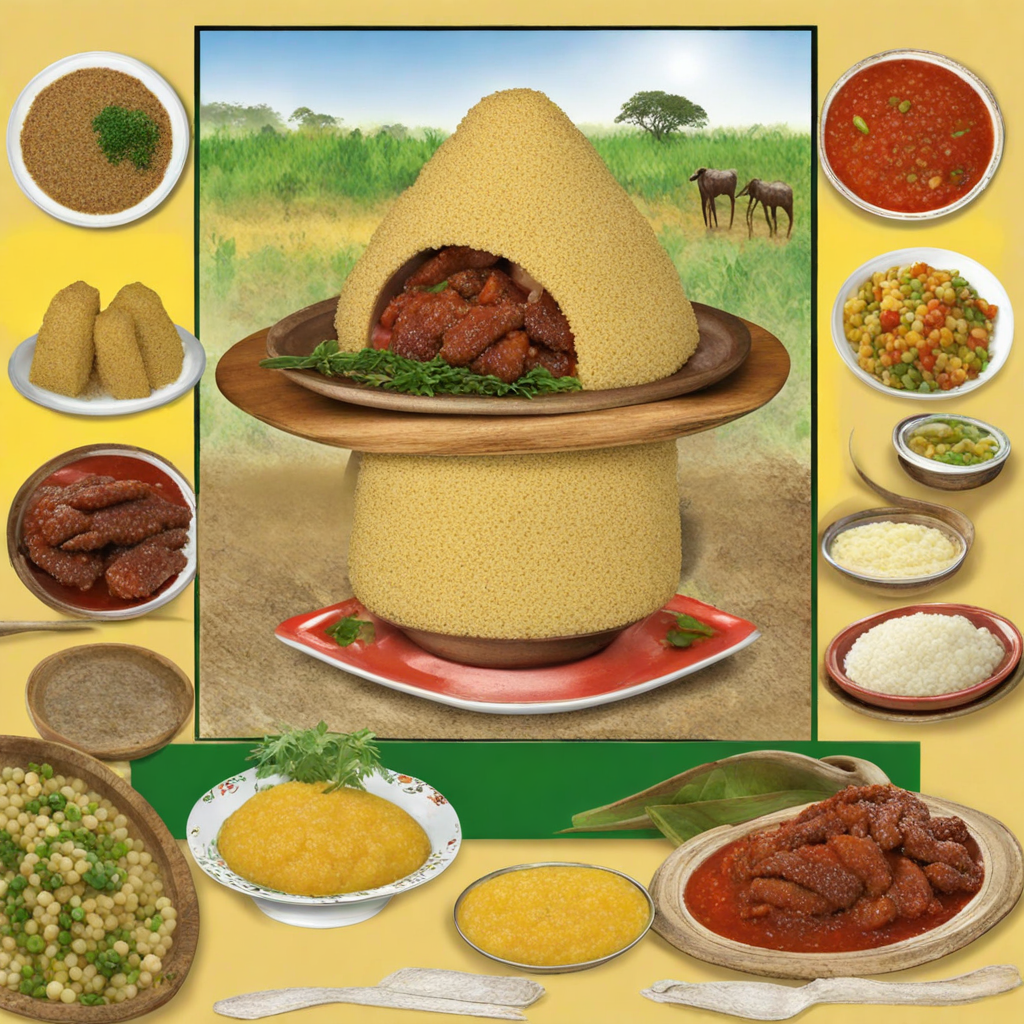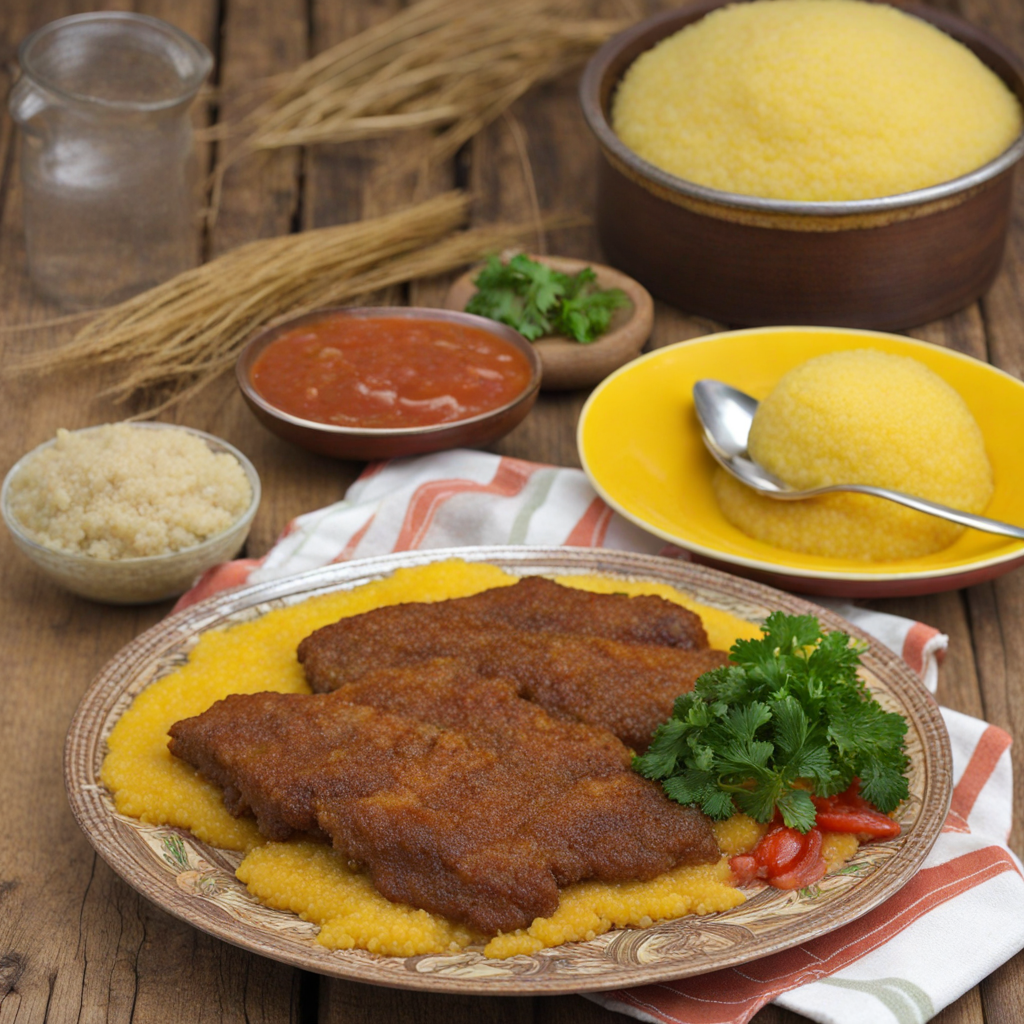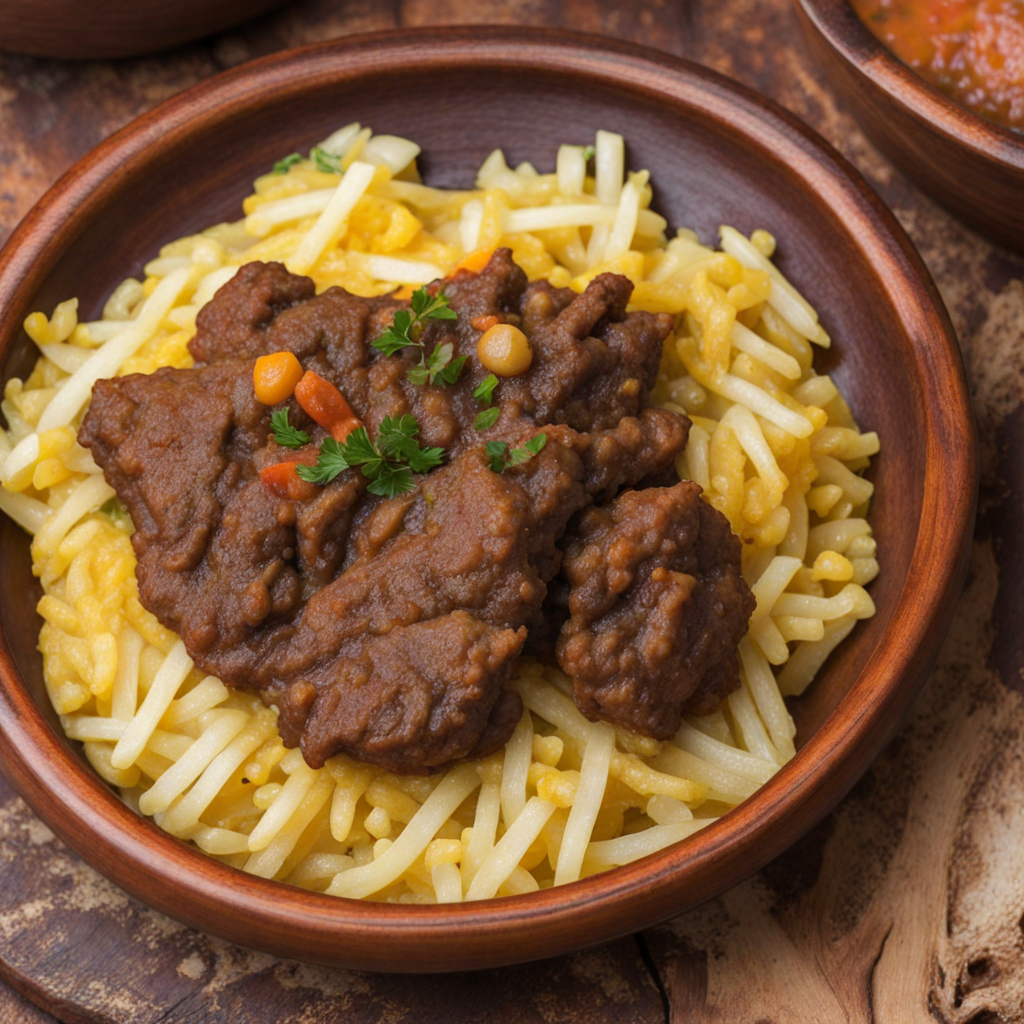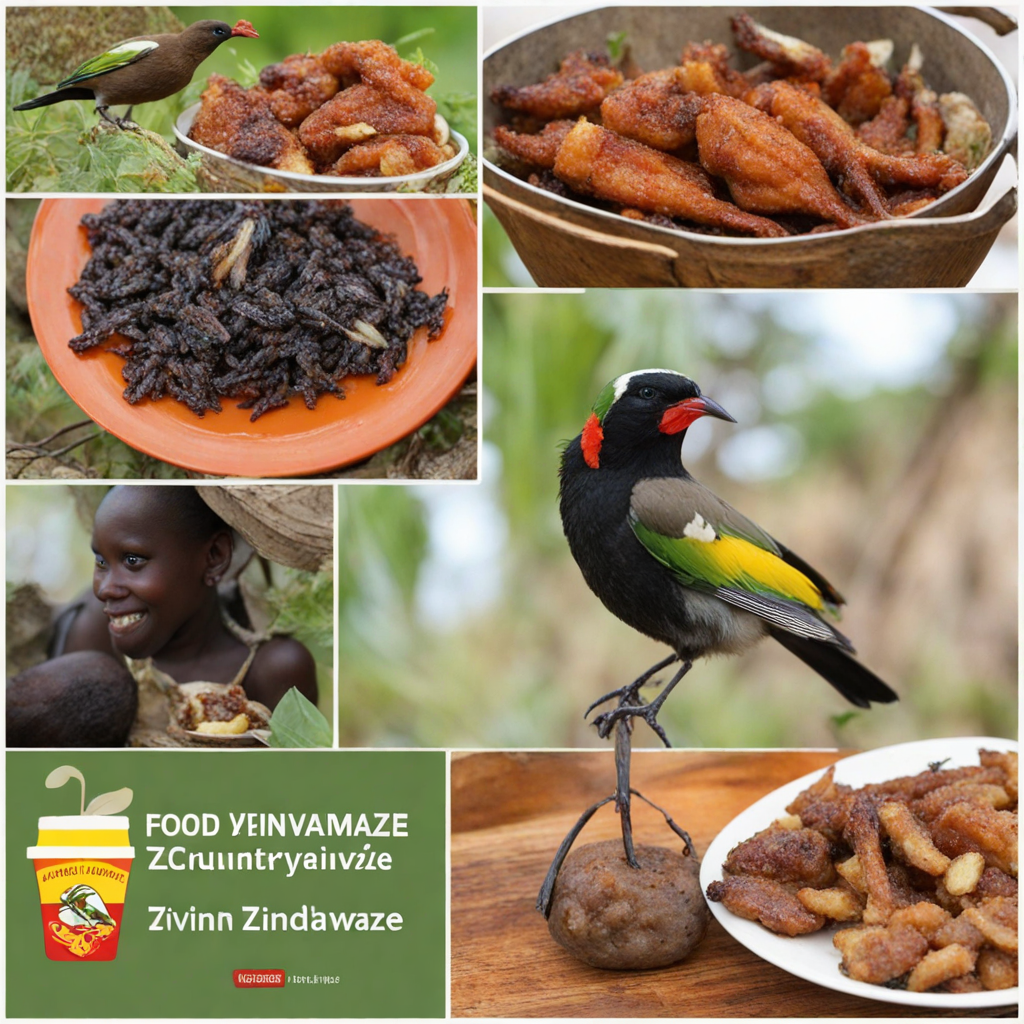Sadza
Sadza is a staple dish in Zimbabwe, characterized by its smooth, dense texture and neutral flavor. Made primarily from finely ground cornmeal or maize meal, it is prepared by cooking the meal with water until it thickens into a cohesive, dough-like consistency. The dish is often served as a side, allowing its mildness to complement a variety of savory stews, meats, and vegetables. The preparation process requires skill, as achieving the perfect texture involves careful stirring and timing to ensure it doesn't become lumpy or overly sticky. Traditionally, Sadza is enjoyed by hand, where diners take a portion, mold it into a small ball, and dip it into accompanying sauces or stews. This communal aspect of eating enhances its appeal, making it not just a meal but also a cultural experience. The dish is often accompanied by flavorful side dishes such as braised greens (known as 'muriwo'), hearty meats, or spicy relishes, adding layers of taste that elevate the humble Sadza to a satisfying and hearty meal. While Sadza itself is quite simple, its versatility allows it to absorb the flavors of whatever it is paired with, making it a canvas for a myriad of culinary expressions. In Zimbabwean households, it is common to find variations in preparation depending on regional preferences, with some opting for a coarser texture or incorporating different grains like sorghum. This adaptability ensures that Sadza remains a beloved dish across generations, embodying the warmth and richness of Zimbabwean cuisine.
How It Became This Dish
The History of Isitshwala: A Staple of Zimbabwean Cuisine #### Origins and Cultural Significance Isitshwala, often referred to as sadza in various parts of Zimbabwe, is a staple food made primarily from maize meal. Its origins trace back to the introduction of maize (Zea mays) to Africa from the Americas in the 16th century. Prior to this, indigenous grains such as sorghum and millet were prevalent in the diets of the people in the region. The arrival of maize transformed local agriculture and culinary practices, eventually leading to the widespread adoption of isitshwala as a central dish in Zimbabwean cuisine. The word "isitshwala" derives from the Shona language, where it denotes the thick porridge made from maize meal. This dish is not merely a food item; it embodies the essence of Zimbabwean identity and culture. It is served at almost every meal and forms the backbone of many traditional dishes, often accompanied by meat, vegetables, or relish. In Zimbabwean households, isitshwala is a symbol of hospitality and is frequently offered to guests as a gesture of goodwill. The cultural significance of isitshwala extends beyond mere sustenance. It is often associated with communal gatherings, family reunions, and celebrations. The preparation and sharing of isitshwala represent togetherness, as families and communities come together to enjoy a meal. It is also a staple during ceremonies and rituals, signifying abundance and a connection to ancestral traditions. The act of eating isitshwala often fosters a sense of belonging, reinforcing social bonds among individuals. #### Development Over Time In the early years following the introduction of maize, the preparation of isitshwala was relatively straightforward. The maize grains were ground into meal and mixed with water to create a thick porridge, which was then cooked over an open fire. The cooking technique involved constant stirring to prevent lumps from forming, a practice that has been passed down through generations. Over time, the method of preparation has evolved, although some traditional techniques remain. Today, while many Zimbabweans still prepare isitshwala by hand, the use of modern kitchen appliances has made cooking easier. Electric stoves and cooking pots have become common, allowing for greater convenience while still retaining the essence of the dish. In the 20th century, as Zimbabwe underwent significant political and social changes, the role of isitshwala within the community also transformed. The fight for independence in the 1960s and 1970s brought about a renewed sense of nationalism. Isitshwala emerged as a symbol of resilience and unity among the people, representing not only sustenance but also the struggle for identity and self-determination. During this period, isitshwala was often consumed by freedom fighters, who relied on its energy-giving properties during long days of struggle. Post-independence, isitshwala continued to play a central role in Zimbabwean society. The dish became a source of pride for the newly independent nation, reflecting cultural heritage and tradition. It was during this time that isitshwala began to garner recognition beyond Zimbabwe's borders. Zimbabwean diaspora communities began to celebrate and share their culinary heritage, introducing isitshwala to international audiences. This has led to its inclusion in various African culinary festivals and its recognition as a crucial part of Zimbabwean identity. #### Variations and Regional Differences While isitshwala is a ubiquitous part of Zimbabwean cuisine, regional variations exist that reflect local ingredients and culinary practices. In the eastern highlands, for example, some households may incorporate local vegetables into the dish, creating a more nutritious version. In urban areas, isitshwala may be served with a variety of sauces and meats, showcasing the influence of globalization and the fusion of traditional and contemporary culinary practices. Moreover, the dish is not limited to maize alone. In some regions, isitshwala can also be made from other grains like sorghum or millet, particularly in areas where maize is less accessible. These variations illustrate the adaptability of Zimbabwean cuisine and its ability to embrace local resources while maintaining cultural significance. #### Isitshwala Today Today, isitshwala continues to be an essential part of daily life for many Zimbabweans, whether in urban centers such as Harare and Bulawayo or in rural communities. It is commonly served as a base for various accompaniments, such as braised meats, stews, and leafy greens. The versatility of isitshwala allows it to complement a wide range of flavors, from spicy to savory, making it a beloved dish among Zimbabweans. In recent years, there has been a growing interest in the health benefits of traditional foods, including isitshwala. As the world becomes increasingly aware of the importance of a balanced diet, there has been a resurgence in the appreciation for whole grains and natural ingredients. Isitshwala, often made with minimal processing, aligns well with these health-conscious trends, offering a nutritious source of carbohydrates. Additionally, the rise of social media has played a significant role in promoting Zimbabwean cuisine, with isitshwala often featured in food blogs, cooking shows, and culinary events. This exposure has allowed for a broader appreciation of the dish, attracting the interest of food enthusiasts and chefs around the world. #### Conclusion In summary, isitshwala is more than just a dish; it is a reflection of Zimbabwe's rich cultural history and culinary heritage. From its humble beginnings as a simple porridge to its status as a national symbol, isitshwala has evolved while remaining deeply rooted in tradition. Its role in fostering community, identity, and resilience cannot be overstated, making it an integral part of the Zimbabwean experience. As the world continues to embrace diverse culinary traditions, isitshwala stands as a testament to the enduring power of food in shaping culture and nurturing connections among people.
You may like
Discover local flavors from Zimbabwe







